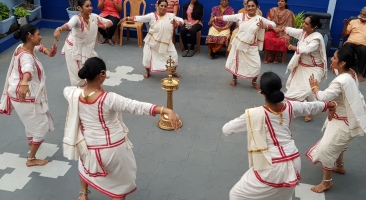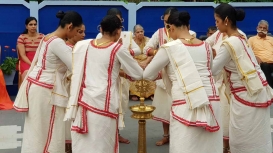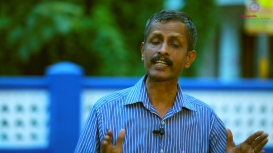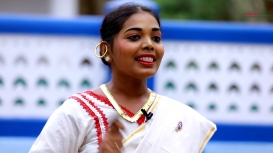Song and dance have always been part of Christian worship and rituals. There are many instances in the Old and New Testaments that bear testimony to this. In 50 CE, Thomas the Apostle reached the shores of India. He finally landed up in the Chola-Chera kingdoms, where he spread the Way of Christ. Seeds of Christianity thus sown, sprouted and prospered in numbers as well as in wealth. The freshly converted were called Syrian Christians, and new rituals and customs incorporating the native cultural elements were formed that reflected the syncretic nature of the community. This holds true for the ritualistic dance of Margamkali as well. Twelve men representing the twelve disciples of Jesus Christ, perform around an elevated platform with a cross in the middle, dancing to the melodic rendering of the apostolic acts of St. Thomas. Performed on important and auspicious days in a Christian's life, Margamkali is supposed to have drawn inspiration from Yatrakali, the circular dance of the Brahmins. Though performed only by Syrian Christian men in the beginning, the inclusion of the dance form in the State Youth Festival has allowed women teams, propelling it to the public eye. Today, Margakali is popular across all Christian communities of Kerala.
Margamkali: Melodic Rendering of the Apostolic Acts of St. Thomas
in Module
Published on:

Dhanya Indu
A native of Wayanad in Kerala, Dhanya has worked for more than a decade in television journalism. Her interests lie in the areas of culture and heritage. She writes regularly for mainstream magazines.




